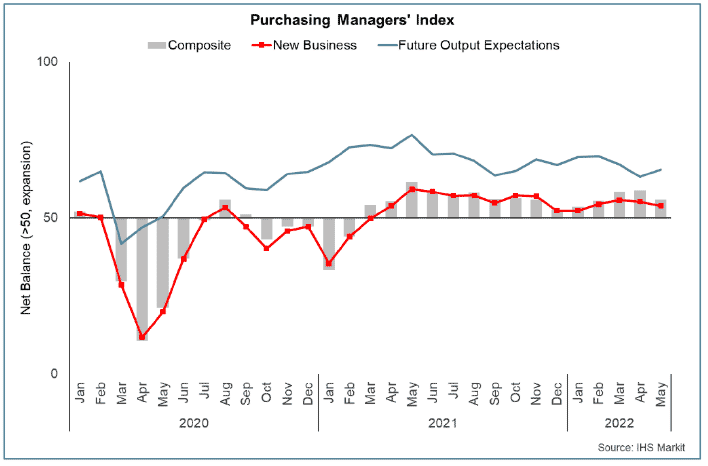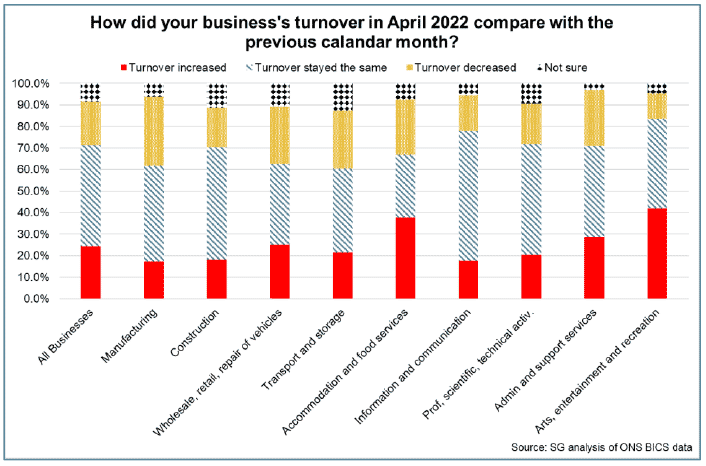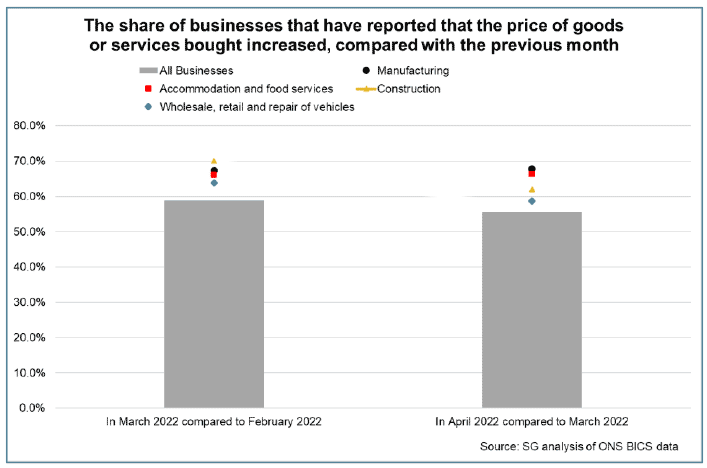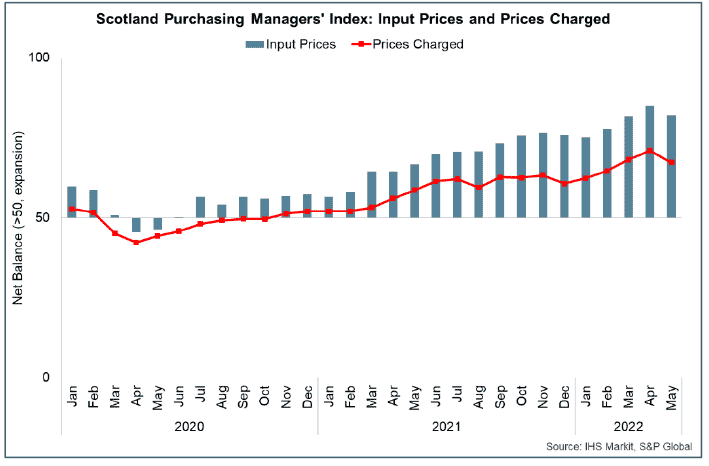Monthly economic brief: June 2022
The monthly economic brief provides a summary of latest key economic statistics, forecasts and analysis on the Scottish economy.
This document is part of a collection
Businesses
Businesses continue to face a range of supply side challenges, which coupled with the weaker outlook for demand, is weighing on growth expectations.
Business activity and expectations
- The Purchasing Managers Index (PMI) business survey signalled that Scottish business activity continued to expand in May, though at a softer rate than in March and April (55.9, down from 58.9 in April) with growth easing across both the manufacturing (50.6) and services sectors (57.1).[2]
- This partly reflected slower growth in new business, with inflows of new business/orders rising at the softest pace in five months, in part due to weakening demand through a renewed fall in new business for manufacturers.
- In May, Scottish business future output expectations remained positive with the composite index rising on April, however expectations have eased since the start of the year. Furthermore, flash UK PMI data for June indicated that business optimism of UK businesses fell further over the month and to its lowest level since May 2020 towards the start of the pandemic. This reflects the general weakening outlook for the economy over the coming year with businesses facing ongoing supply side challenges and inflationary pressures alongside concerns of a weakening in demand conditions from a fall in non-essential spending by households and businesses.[3]

Business turnover and input costs
- The Business Insights and Conditions Survey (BICS)[4] provides regular insight into business financial performance as the economy continues its recovery from the pandemic and in the face of current headwinds.
- BICS data up to the start of April indicates that at an aggregate level, business turnover has been improving as Covid restrictions on the economy have been removed with a declining share of business reporting that turnover has decreased compared to normal and a rising share reporting that turnover has increased.
- When asked how business turnover in April 2022 compares to the previous month, 24% of respondents reported that turnover had increased (down from 36% in March), 47% reported it had stayed the same (up from 46%) and 20% reported it decreased (up from 10%).[5]

- Parts of consumer facing services continued to have above average shares of businesses reporting a decrease in turnover (26% in the accommodation and food services sector), however, the sectors with the highest share of businesses reporting a decrease in turnover over the month were manufacturing (32%), transport and storage (27%), wholesale, retail, repair of vehicles (26%) and admin and support services (26%).
- Supply side challenges continue to be key factors impacting business activity with 36% and 28% of respondents respectively reporting that material costs and labour costs are impacting their business turnover.
- Intense input cost pressures continued in April with over half of all businesses reporting that prices had increased relative to March, (56%, down from 59% in March). Increased prices remained most widespread in manufacturing (68%), construction (62%), wholesale, retail and repair of vehicles (59%), and accommodation and food services (66%).

- In response to price rises, 50% of all businesses in May reported having to absorb costs, while 37% had to pass increased costs onto consumers. Scottish PMI data also indicated a further pass through of higher input costs to customers in May. Both the input costs indicator (82.1) and prices charged (67.3) eased back slightly from their series high levels in April, however remained elevated and reflected that firms are facing higher energy, materials and labour costs and have raised prices to offset the squeeze on margins.

- The ability of firms to absorb elements of costs has partially been supported by improving cash reserves. The BICS indicator for business cash reserves has been trending upwards since the beginning of the year, with 53% of all businesses reporting more than 6 months cash reserves at the beginning of May.
Contact
Email: OCEABusiness@gov.scot
There is a problem
Thanks for your feedback